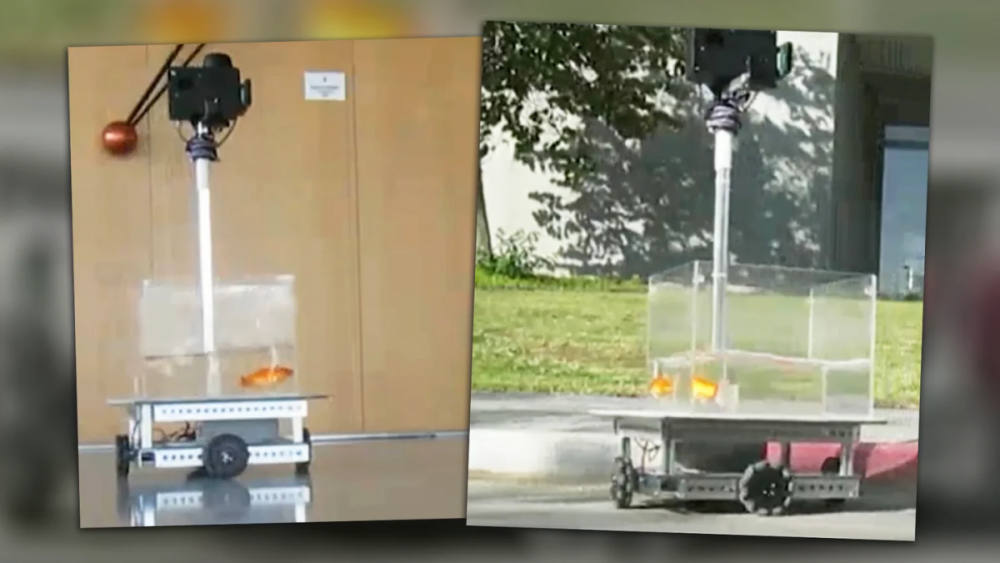Search the Community
Showing results for tags 'artificial intelligence'.
-
I decided to create a separate thread for AI. Things are really rapidly changing. AI to replace sales staff that are in a revolving door situation. Seems like this company has hit upon a niche that larger companies are very interested in. Not all of these ideas will work out. But you can bet a significant portion of desk/admin jobs will slowly be redundant over the next 10-15 years. Maybe by then, some of us would be working alongside AIs to do some of the routine tasks. https://techcrunch.com/2017/04/09/saleswhale-seed-funding/
- 584 replies
-
- 2
-

-
- artificial intelligence
- singapore
-
(and 3 more)
Tagged with:
-
Is your boss asking you to explore and learn how to use AI to improve the quality and efficiency of your work? Yup, you aren't the only one in that boat. Whilst exploring new AI tools, I figured: Why not use it to answer some burning questions that I have? This time, it was about whether forums are outdated. Yes, forums like this one that we are on. I remember how before social media became popular, and before apps like Carousell existed, forums were where I chatted with others to learn more about things that I was interested in. It was also the only marketplace where I knew I could sell things locally with ease. So, lets see what the AI has churned out: Forum vs. Social Media: A Comparison of Social Interaction Platforms Structured Discussions Forums, with their thread-based structure, excel at facilitating rich, topic-centered discussions. This setup promotes in-depth conversations and knowledge-sharing, such as the community-focused interaction found on platforms like Reddit and Stack Exchange. In contrast, social media operates more like a stream of consciousness with its fluid news feed format, where personal updates and relationship-building take precedence. Engagement and Interaction Social media platforms, like Twitter and Instagram, foster a sense of personal connection through user profiles and engagement features like likes and shares. However, this can lead to echo chambers, where users primarily encounter content that reflects their views, often intensifying divisions on issues like climate change as some studies suggest. Anonymity vs. Identity Forums typically offer a layer of anonymity, focusing interactions on the discussion topic rather than the individual. This is quite different from social media, where personal branding and identity are central. In summary, while forums prioritise structured, topical discussions, social media emphasizes personal interactions and real-time communication. Both platforms offer unique benefits, and the best choice depends on your social interaction goals. Are Forums Outdated? Exploring the Evolution of Online Communication The Timeless Appeal of Forums Despite the leaps and bounds made in online chat and social interaction platforms, forums maintain a timeless charm that keeps them relevant even today. While social media platforms offer more dynamic, real-time engagement, forums excel in creating a focused environment for in-depth discussion. They attract users seeking meaningful exchanges, where each thread acts as a time capsule of shared knowledge. A Unique Niche Among Modern Platforms Forums offer a distinctive niche compared to social media or messaging apps. While platforms like Discord or WhatsApp emphasize rapid, ephemeral chatting, forums allow for enduring conversations that can be revisited and referenced. This unique format of online forum interaction can be invaluable for users looking to delve deeply into niche topics or hobbies, distinguishing them in a sea of fleeting social interactions. ------------------------------------------------------------------------------------------------------------------------------- I personally feel that I'm spending a lot more time on Facebook groups, Instagram and other social media platforms, but every now and then when I'm searching for information about certain topics, forum answers would pop up. So I agree with the AI on how forums' structured discussions with the threads and topics make them unique and useful; while you can use the search bar on Facebook groups, the posts aren't categorised into threads. Also, what I really like about forums is the chronological order of posts and how interactions will bump them up - most of the time organically. So I feel that forums still have a place lah, but I also feel that the use of forums seems to be declining in recent times. And hor, with AI giving us all the answers, maybe there, forum activity will be reduced even more... I know it's a long post, but what are your thoughts? Maybe you're the reason that you keep coming back to Mycarforum?
- 3 comments
-
Powderful
- 23 replies
-
- 5
-

-
https://vulcanpost.com/843379/team-of-ai-bots-develops-software-in-7-minutes-instead-of-4-weeks/ Back in July, a team of researchers proved that ChatGPT is able to design a simple, producible microchip from scratch in under 100 minutes, following human instructions provided in plain English. Last month, another group — working at universities in China and the US — decided to take a step further and cut the humans out of the creative process almost completely. Instead of relying on a single chatbot providing answers to questions asked by a human, they created a team of ChatGPT 3.5-powered bots, each assuming a different role in a software agency: CEO, CTO, CPO, programmer, code reviewer, code tester, and graphics designer. Each one was briefed about its role and provided details about their behaviour and requirements for communication with other participants, e.g. “designated task and roles, communication protocols, termination criteria, and constraints.” Other than that, however, ChatDev’s — as the company was named — artificial intelligence (AI) team would have to come up with its own solutions, decide which languages to use, design the interface, test the output, and provide corrections if needed. Once ready, the researchers then fed their virtual team with specific software development tasks and measured how it would perform both on accuracy and time required to complete each of them. The dream CEO The bots were to follow an established waterfall development model, with tasks broken up between designing, coding, testing, and documenting of work done, with each of them assigned their roles throughout the process. What I found particularly interesting is the exclusion of CEO from the technical aspects of the process. His role is to provide the initial input and return for the summary, while leaving techies and designers to do their jobs in peace — quite unlike in the real world! I think many people would welcome our new overlords, who are instructed not to interfere with the job until it’s really time for them to. Just think how many conflicts could be avoided! Once the entire team was ready to go, the researchers then fed their virtual team with specific software development tasks and measured how it would perform both on accuracy and time required to complete each of them. Here’s an example of fully artificial conversation between all of the “members”: Later, followed by i.a. this exchange between the CTO and the programmer: These conversations continued at each stage before its completion and information being passed for interface design, testing, and documentation (like creating a user manual). Time is money After running 70 different tasks through this virtual AI software dev company, over 86 per cent of the produced code was executed flawlessly. The remaining about 14 per cent faced hiccups due to broken external dependencies and limitations of ChatGPT’s API — so, it was not a flaw of the methodology itself. The longest time it took to complete a single task was measured at 1030 seconds, so a little over 17 minutes — with an average of just six minutes and 49 seconds across all tasks. This, perhaps, is not all that telling yet. After all, there are many tasks, big and small, in software development, so the researchers put their findings in context: “On average, the development of small-sized software and interfaces using CHATDEV took 409.84 seconds, less than seven minutes. In comparison, traditional custom software development cycles, even within agile software development methods, typically require two to four weeks, or even several months per cycle.” At the very least, then, this approach could shave off weeks of typical development time — and we are only at the very beginning of the revolution, with still not very sophisticated AI bots (and this wasn’t even the latest version of ChatGPT). And if time wasn’t enough of a saving, the basic costs of running each cycle with AI is just… $1. A dollar. Even if we factor in the necessary setup and input information provided by humans, this approach still provides an opportunity for massive savings. Goodbye programmers? Perhaps soon, but not yet. Even the authors of the paper admit that even though the output produced by the bots was most often functional, it wasn’t always exactly what was expected (though it happens to humans too — just think of all the times you did exactly what the client asked and they were still furious). They also recognised that AI itself may exhibit certain biases, and different settings it was deployed with were able to dramatically change output, in extreme cases rendering it unusable. In other words, setting the bots up correctly is a prerequisite to success. At least today. So, for the time being, I think we’re going to see a rapid rise in human-AI cooperation rather than outright replacement. However, it’s also difficult to escape the impression that through it we will be raising our successors and, in not so distant future, humans will be limited to only setting goals for AI to accomplish, while mastering programming languages will be akin to learning Latin.
- 20 replies
-
- 3
-

-

-
- programmers
- ia bots
- (and 9 more)
-
I don't know where to post this interesting news (no humsup intention), so I started the thread. Think of it, it is quite scary to guess if the model you are seeing is real or a AI generated fantasy. To our MCF mod, is it ok? Source: https://soranews24.com/2023/05/30/ai-generated-swimsuit-lingerie-model-makes-debut-in-japans-weekly-playboy-magazine【photos】/ “Ai” is a pretty common name for models in Japan, and not just because it’s short and easy to remember. In addition to being a woman’s name, ai is also the Japanese word for “love,” so the flowery, feminine feeling it conjures up is one more way to catch the attention and affection of prospective fans. For example, here’s Ai Satsuki, the newest model being promoted by Japanese publisher Shueisha. But while Ai’s name was given to her by Shueisha, the publisher didn’t make that decision just because they hope people will fall in love with her, but because her images are generated by AI. Ai made her professional debut this Monday, appearing in the latest issue of Shueisha’s Weekly Playboy magazine. A separate entity from the American Playboy magazine), Weekly Playboy is best known for its gravure photo spreads focusing on models in swimsuits, lingerie, and other revealing outfits. In its announcement tweet, Weekly Playboy describes Ai as being “stuffed full of men’s ideals” and asserts that “Even if she doesn’t actually exist, the love for her that sprouts in your heart is real.” Despite not having a physical form, Ai is officially listed as being 157 centimeters (61,8 inches) tall, as well as being born in Tokyo and enjoying playing video games as a hobby. Along with her appearance in this week’s Weekly Playboy, Shueisha has also released 50-page digital image album for Ai titled Umaretate (“Just Born”), featuring images not included in her Weekly Playboy spread, through its Weekly Playboy Gravure Japan website. “AI gravure models? What do you think?” asked Weekly Playboy in its tweet, prompting responses including: “No scandals. No scheduling problems. No talent agency problems. No appearance fees. Sounds good.” “I want Weekly Playboy to photograph real people.” “Eventually, I think people will come around to appreciating AI gravure models.” “She’s cute!” “I hope this is a one-time thing, and doesn’t take page space away from real gravure models.” “When are we going to see an Ai Satsuki video?” “She’s cute! Following her account and going to keep an eye on what she does next.” “If you put out a physical copy of her photo album, I’m buying it.” “Things are going to get tougher for 3-D women.” “AI gravure photos are beautiful, but I prefer real ones. Actual idols have daily lives and life experiences, and I think that’s what makes fans really feel attached to them and want to help them succeed.” The last comment touches on a characteristic point of gravure idol marketing in Japan: the idea that by purchasing merchandise, attending paid-ticket meet-and-greet events, and otherwise financially supporting their favorite idol, fans are actively supporting her professional aspirations. That unique sense of satisfaction plays a big part in cultivating high-spending superfans, and whether or not a photo-realistic but AI-generated model can form the same emotional connection may be the determining factor in whether or not Shueisha, and other publishers too, press forward with AI gravure models.
- 646 replies
-
- 8
-

-
.png)
-
- artificial intelligence
- japan
-
(and 2 more)
Tagged with:
-
It has been estimated that between 10%-40% of jobs could potentially be automated, fully or partly, in the next 10 years using artificial intelligence (AI). This will only accelerate as Silicon Valley and its likes around the world work on new technologies to disrupt every industry. Retail numbers are bad with e-commerce. Friends in banking are telling me they are expecting massive retrenchment in the next 5 years, with large scale branch closure and as automation takes root, with digital banking. In the US, Andrew Yang is running as a democratic presidential candidate on "freedom" dividend and making predictions that autonomous driving will cost 3 million trucking jobs in the US and another 4 million supporting jobs within 10 years. Some say lots of new AI / tech jobs will be created, guess that is why G is liberalizing FT policy for technology but I doubt they will be enough to replace local jobs that will be lost permanently. So what would be a futureproof job? I can think of plumbing, perhaps therapists and other clinical roles? Even prostitutes can be replaced with virtual reality! Perhaps 3-4 days work week will be here soon... just to keep all employed? With the end of lifetime employment, got to be prepared to be hired, fired and retrained several times over your entire working life. What is your view? https://www.forbes.com/sites/cognitiveworld/2018/08/07/job-loss-from-ai-theres-more-to-fear/amp/
- 89 replies
-
- 7
-

-
- artificial intelligence
- robot
-
(and 1 more)
Tagged with:
-
<Scientists Trained Goldfish to Drive a Little Car It's proof that fish are capable of navigation even in unfamiliar environments. Scientists often create elaborate studies in order to tease out secrets and truths from the animal world. One such work has recently been published, with a group from Ben-Gurion University hoping to determine the true nature of a fish's navigation capabilities, as shared on Twitter. Several goldfish were tasked with driving a robot towards a goal, with the sea creatures proving more than up to the job. As per the paper available online, the apparatus for the test was relatively straightforward. Goldfish were placed in a small transparent tank of water placed on top of a robot chassis. A camera mounted above the tank tracked the fish's position and orientation. If the fish swam outward towards a given wall, the robot would move in that direction. When the fish drove up to a pink target on the wall, they would be rewarded with food. Initially, the six fish in the study drove around largely at random. However, tests were regularly performed three times a week, and the fish quickly began to learn that if they drove over to the target area, they would receive food. Over time, the fish became more capable, and could trigger the reward mechanism more times in a single given 30 minute test session. The researchers wanted to further determine just how well the fish had learned to understand their terrestrial environment. The starting position in the room was changed, and the fish were still able to navigate to the target for a reward. Similarly, adding decoy targets of different colors in the room did not stop fish from achieving the task. As a further test, the pink target was moved to a different location in the room and the fish were tested again. Initially, fish drove towards the old target location in an attempt to receive a reward. When none was forthcoming, the fish eventually learned that the pink target itself was the key to the task, and began to drive there instead. The study suggests that a goldfish's navigational abilities are not solely limited to the underwater environment to which they are accustomed. Indeed, a fish can learn to drive a robot in order to secure food. Furthermore, the tiny creatures are also able to build a greater understanding of their world, proven by learning that reaching the pink target, and not simply the original target location, is key to receiving a reward. It also helps clear up the widely-disproven myth that the common pet fish only have a 3-second memory. We've seen similar studies before, which may seem frivolous, but they teach us a great deal about how organic brains work and their true capabilities. We're still likely a ways off from teaching dogs to drive cars, but such insights are of key importance to learning about animal behavior. Creative test design is key to really determining what's going on inside the brain of a goldfish who otherwise can't tell us what's going on, as ably demonstrated by this study.>
- 10 replies
-
- 3
-

-
.png)
-
- goldfish
- navigation
-
(and 5 more)
Tagged with:







